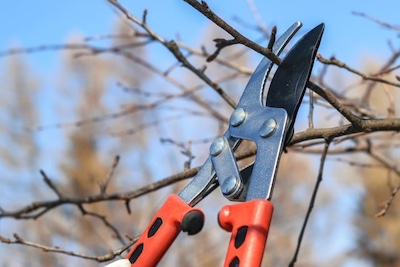A Step by Step Plan to Regularly Improve Your Smaller Sized Nonprofit
- Home
- Small Nonprofit Practices
A Step by Step Plan to Regularly Improve Your Smaller Sized Nonprofit
I call this program The Attitudes of Excellence program. It is a step by step plan to regularly improve your smaller sized nonprofit.
This practical system is self-directed which allows you to identify and take action on specifically identified issues that are affecting performance in 10 possible areas of your organization.

Read below for instructions and details of each of these 10 areas.
|
|
Choose From Any of 80 Practices that Affect the Performance of Small Nonprofits

Imagine getting 80 professionally taken snapshots of your organization. Each one is a picture of something different.
Now imagine carefully going over each snapshot. What would you notice? Opportunities, problems, challenges, progress or neglect?
These practices are not a course in photography. But, if paid attention to, they will give you an accurate picture of the effectiveness of your organization and allow you to do something about it.
Identify starting points, deal with barriers to progress, and strategize to make best use of what God has given your organization. Use this step by step plan to regularly improve your smaller sized nonprofit.
Follow it and you will know exactly where improvement is needed. Then the leadership can determine how to best get there.
If you would prefer one to one coaching please contact me to discuss your situation.
Instructions for Using the Program

Not every practice will be applicable to you as written. For instance, your program may differ, so the benchmark wording may need working.
Each organization is different. Simply adjust the wording to reflect your organization. This step by step plan to regularly improve your smaller sized nonprofit is totally flexible. Use it as a template to get you started.
Assess How You Are Doing - It will be helpful for each practice, for you and/or your team to score yourself from 0 - 10 on performance. Send out your anonymous assessment to your team and stakeholders. Request participation by a cut-off date. Crunch the numbers and analyze the responses.
30 - 50 respondents would give you an excellent snapshot of where you are at. You could set your assessment up on a survey app such as SurveyMonkey. I do not do assessments.
This first assessment establishes a baseline against which to measure future efforts at improvement in each area.
For example: If you score 6/10 on a particular practice, you could spend the next year working toward a score of 8/10. Or you could turn it into percentages - moving from 60% to 80%.
Keep in mind, executive coaching for nonprofit leaders is a proven way to spark and drive change. Call me to discuss what you are trying to achieve. This step by step plan to regularly improve your smaller sized nonprofit will give you a practical, doable way to drive that change.
10 Areas Where Every Small Nonprofit Can Improve Their Performance

1. How to Improve the Performance of Your Small Nonprofit BOARD
Responses in this category express the perception respondents hold about the vision, effectiveness and working relationships of the board members.
A low score would indicate that the respondents feel the board could be more effective both within their meetings and in making representation to the staff and public.
A high score indicates satisfaction with the current board and its approach to the oversight of the organization.
Coaching to Develop Better Boards for Small Nonprofits
1. The board has a clearly articulated vision for the organization
2. A master operational plan is in place to achieve the vision
3. Board members are competent to work effectively on a board
4. Board members regularly assess their effectiveness
Board Member Best Practices in the Smaller Nonprofit
5. There is a good mix of both well-experienced and new board members
6. The board doesn't overlook facts to avoid issues
7. Collaboration characterizes board decision-making
8. The board recognizes the efforts of staff and volunteers
2. How to Improve the LEADERSHIP Within Your Small Nonprofit
Responses in this category reflect the respondent's view of how leadership within the organization is approached. Taking responsibility as a leader is made easier when there is a visible support structure for, and an effective modeling of leadership.
A low score indicates that organization wide, leadership is weak and those who look to work with and become good leaders are not seeing all the elements in place for the effective forward movement of the organization and its aims.
A high score indicates a positive and supportive attitude toward leaders and their development. Perhaps you have provided executive coaching for nonprofit leaders in your organization?
Assess the Leadership Performance of Your Small Nonprofit
9. Leadership style is appropriate for the stage the organization is at
10. The organization supports leadership development
11. Senior leadership has a proven track record of servanthood
12. The organization's leaders have a passion for excellence
Develop Leadership Best Practices for Your Small Nonprofit
13. Quality people are attracted to serve within the organization
14. People are empowered to assume leadership roles
15. Leaders know when it is time for them to let others take over from them
16. There are smooth transitions in leadership
Keep in mind, I provide one on one coaching to help you realize these gains. You don't have to go it alone.
Go here to access executive coaching for nonprofit leaders in your organization.
3. How to Improve PLANNING Within Your Small Nonprofit
Responses in this category indicate the respondent's perception of whether or not the leadership has an adequate plan to move the organization and its aims ahead, while preserving everything that is important to them.
A low score indicates that respondents believe improvement is needed in planning for the future.
A high score shows that the organization has a sense of direction that is conveyed well to its staff.
Executive Director Coaching for Better Nonprofit Planning
17. Stakeholders support the stated plan for the organization moving forward
18. Options are weighed against the master plan during decision making
19. Decisions are made on well-researched information
20. The master plan is modified as needed
Leadership Coaching to Improve Planning Practices in Small Nonprofits
21. All plans are reviewed and updated regularly
22. There is an emphasis on the organization continuously improving
23. Senior leaders demonstrate a practical, visionary approach to leadership
24. Financial reserves are in place to handle short-term emergencies
Remember, the step by step plan to regularly improve your smaller sized nonprofit can be tweaked to accurately reflect your organization. Make it work for you.
4. How to Improve the Performance of Your Small Nonprofit's EXECUTIVE DIRECTOR
Responses in this category express the respondent's perception of the well-being of the Executive Director and the structure in place that allows them to operate to their potential.
A low score would indicate that the Executive Director needs further structure and support to perform at their best.
A high score would indicate that the Executive Director has what is needed to perform well and lead the organization.
Board Coaching to Develop Your Executive Director
25. The ED is remunerated sufficiently allowing for financial stability
26. The growth and maturity of the ED is evident
27. The professional development budget for the ED is adequate
28. The ED has time for his/her personal life
Coaching to Support the Executive Director of a Small Nonprofit
29. Good support staff allows the ED to work on priorities
30. The Board supportively assists the ED
31. The ED works with a mentor or professional Coach
32. A process of ED accountability is in place
Most often organizations put their staff investment money toward executive coaching for nonprofit leaders. Go here to contact me for a conversation.
5. How to Improve the Performance of Your Small Nonprofit STAFF
Responses in this category reveal the respondent's perception of just how effectively the organization's staff is collaborating to meet overall goals and carry out the immediate job at hand, as set out by the leadership.
A low score indicates that some area of staffing is presenting a problem.
A high score indicates that staff is functioning effectively and in the best interests of the organization's aims.
Assistance in Managing Small Nonprofit Staffing
33. On-site staff works in harmony as a team
34. Staff accountabilities are clearly written
35. Staff is coached to develop personally and professionally
36. Staff respects each other's duties within the team
Coaching to Improve Small Nonprofit Staff Performance
37. Staff perform their jobs effectively
38. Consequences for non-performance are carried out as specified
39. Conflicts are dealt with immediately
40. No one is dragging others or the organization down
As you create your step by step plan to regularly improve your smaller sized nonprofit, remember ... make use of your staff. Permanent, volunteer, senior staff or starting, all have valuable input. Make sure they fill in the assessment you create.
6. How to Improve How Your Small Nonprofit POLICIES
Responses in this category show what respondents think about the number and practical value of current policies. It also measures the process followed to create and implement those policies.
A low score indicates that current policies may be posing problems and need to be reviewed.
A high score indicates that policies are working well.
Coaching to Assist Small Nonprofit Leaders Develop Policy
41. Policies have a readily identifiable purpose
42. Written policies are available to those affected by them
43. Content of policies is understandable
44. Policies are either adhered to or changed
Coaching to Improve Nonprofit Policies
45. Adequate funding is allocated for matters covered by policies
46. Policies go through a thorough process of development and review
47. Policies are used to deal with issues, not control individuals
48. Leadership are clear on their authority to carry out policy
7. How to Improve Your Small Nonprofit PROGRAMMING
Responses in this category point out whether respondents think there is useful, inviting and balanced programming in place. It will also indicate the level of staff interest and engagement with the current programming.
A low score indicates that the programming is mediocre or out of balance somewhere.
A high score indicates that respondents are satisfied that the organization is providing a quality program for its participants (clients, guests, campers etc) while taking care of its staff.
Coaching Leaders of Smaller Nonprofits to Evaluate Programming
49. Activities are appropriate for age level and expertise
50. Programs requiring expert instruction or supervision, have it
51. Daily programs reflect a healthy diversity of activities
52. Overall program allows for adequate rest for participants and staff
Coaching to Create Best Practices in Your Nonprofit Programming
53. Staff are professional, caring and fun-loving
54. There is an emphasis on outdoor activities
55. Participants are not forced to participate in activities
56. Participants are recognized for their achievements
8. How to Improve the PARTICIPANT Experience Your Small Nonprofit Provides
Responses in this category show how respondents feel about the organization's attitude toward participants and responsiveness to their concerns.
A low score indicates that respondents don't think the participants are being well taken care of or heard.
A high score indicates a belief that the organization is focused on their participant's well-being and best interests, giving appropriate attention to concerns and desires voiced.
Improve Participant Experience in a Small Nonprofit
57. Staff
understand the standards for participant care
58. Participant experience is regularly assessed
to improve service
59. Requests and complaints are quickly
handled
60. There is openness between the organization
and the public
Create Best Practices for Participant Experience
61. Referrals
from satisfied participants are a regular occurrence
62. Participant records are current
63. Parents are confident of the care their
child will receive
64. Staff and facilities are ready for the
review of unexpected visitors
As you pay attention to all the other areas in your step by step plan to regularly improve your smaller sized nonprofit, the good participant reports will probably be reflective of the good job you are doing. Keep building on that year over year.
9. How to Improve How Your Small Nonprofit Handles FINANCES
Responses in this category point out the respondent's perception of how the organization relates to, manages and reports on incoming revenue and expenditures.
A low score indicates that there is a perception that monies are not being handled well.
A high score indicates a level of satisfaction with the financial accountability of the leadership.
Coaching for Financial Management in a Small Nonprofit
65. Current
financial status is available at any time
66. Procedures include the ethical handling of
money
67. Money is used in the most efficient manner
possible
68. Standard accounting procedures are in
place
Coaching Best Practices in Small Nonprofit Financial Accountability
69. An
independent source is used to audit financial records
70. Financial resources are perceived as an
investment in people
71. Methods of fund-raising are consistent
with organizational values
72. Financial records are open to members
10. How to Improve How Your Small Nonprofit Addresses SAFETY Concerns
Responses in this category show how respondents feel about the overall approach currently being taken to ensure the safety and security of both participants and staff. It measures the perception of practical preparedness for emergencies and current conditions in place to provide a safe and secure environment.
A low score indicates that safety is an issue at this organization. It reveals a belief that there is an existing risk that may be putting people in jeopardy.
A high score indicates that a safety consciousness is paying off. Respondents feel participants and staff safety is of paramount importance to the leadership.
Coaching to Help Directors and Boards Examine Safety Practices
- Buildings, equipment and locations are safe
- A current emergency response plan is in place
- Staff are regularly trained to carry out the emergency response plan
- Participants review what to do in emergency situations
Organizational Coaching to Improve Safety at the Smaller Nonprofit
- Government and industry safety standards are met or exceeded.
- Insurance coverage meets or exceeds the industry standard
- Designated staff supervises safety procedures
- Safety is a priority, not an option
Frequently Asked Questions About Implementing this Small Nonprofit Improvement Plan

When the organization isn't working at making improvements, how does that contribute to burnout?
- It isn't so much that any one of the 80 practices "causes" overload, burnout, or burn-on. But they become part of the background stress in which burnout breeds.
- Stress is cumulative. It may be there are areas needing real and prompt attention. The Executive Director or the Board Chair, or someone else who sees what is happening is trying to draw attention to it.
- For some reason the Board is not taking it seriously, or someone is purposefully obstructing. That lack of ability to make things happen, but still being held responsible for the results can lead to demoralization and burnout in the Director or some key contributor.
- In providing executive coaching for nonprofit leaders, this comes up often.
How do we respond if our organization isn't exactly set up as you indicate in one of these categories?
- Adapt. Look at this as a framework, an example, to help you reword the category statement to be more in line with how you actually operate. But, don't reword something just to avoid responsibility.
- As I've stressed, this is a step by step plan to regularly improve your smaller sized nonprofit. The secret is the regular improvement. The plan is a template to get you started. Maybe it hits all the points right off. Maybe it needs adjustment to be more reflective of your organization.
Could this be used as a general survey?
- Yes. When I first developed this, I had it set up on SurveyMonkey as an assessment. Stakeholders from an organization could go into their survey and respond.
- Then the statistics could be analyzed and decisions made about which area required the most immediate attention. So you could set this up as a 10 category, 80 question survey for your organization.
- Then you could use that first assessment as a benchmark for future assessments when you survey yet again. This would allow for continuous improvement.
Who needs to be making decisions on using the Attitudes of Excellence Survey?
- Those in a position to make decisions and take action should initiate the survey and taking action. That might mean the Board and Executive Director. Or, it could be tasked to someone else who would do it well.
Does a survey or assessment have to be done?
- Not necessarily. But, it is helpful to see how all the stakeholders feel about the organization's performance. The view of a small number of people may be quite biased. To get 30 stakeholders responding you may need to request 60 or 80 stakeholders do it. The broader the data set, the more you can pin things down.
- Having said that, you could as a Board or leadership team, pick that one category that you already know needs attention. Then you could begin to work through, and improve on, the eight practices of that category.
Executive Coaching for Nonprofit Leaders. Contact Me to Discuss Coaching for Your Executive Director.

I provide one-on-one executive coaching for nonprofit leaders, and other senior members of the team. Occasionally I work with Board Chairs, or others task with critical projects.
It does cost, but the benefit to the leader and organization can be substantial. Providing executive coaching for nonprofit leaders in your organization can deliver real benefit.
Contact me personally to discuss your organization and yourself as its leader or board chair.
One on one executive coaching for nonprofit leaders can help your organization and its leaders work on those things that are really important to your success.
By working with your Leader (and board perhaps) as you implement the step by step plan to regularly improve your smaller sized nonprofit great momentum can be achieved. But, it will take a positive forward moving attitude on the part of all. One person can't make it happen all alone.
Recap

- Those small nonprofit organizations that ask themselves how they can improve, and then do something about it, will improve and do better.
- You CAN improve. Ask yourself what area most requires attention. Or, conduct a survey of your stakeholders and ask them. They'll show you where you are weak, and where you shine.
- Don't settle for mediocrity. Pursue being the best you can be. Sure, you may not have the number of resources that some big nonprofits have, but you can pursue excellence in what you do. It will show up in your staffing, with the public, and in how your service is delivered.
- Don't have just one or two people implementing this. Find a way to make it organization-wide. Your team will respect the efforts at improvement.
- Using a step by step plan to regularly improve your smaller sized nonprofit can have a significant impact and create a measurable difference.
Contact me here Privacy Policy
© G.E.Wood and Associates. All Rights Reserved in all media.
G.E. Wood and Associates is an international coaching firm registered in Ontario, Canada
142 Pratt Crescent, Gravenhurst, Ontario, Canada, P1P 1P5